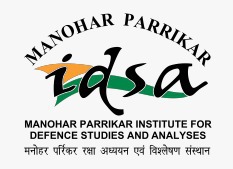
- This event has passed.
Report of Monday Morning Meeting on Reassessing AUKUS in Trump 2.0
March 17, 2025
Cmde. Abhay Kumar Singh (Retd.), Research Fellow, Manohar Parrikar Institute for Defence Studies and Analyses (MP-IDSA) spoke on “Reassessing AUKUS in Trump 2.0” at the Monday Morning Meeting held on 17 March 2025 at 1000h in Seminar Hall I. Dr. R. Vignesh, Associate Fellow, MP-IDSA chaired the session. Ambassador Sujan R. Chinoy, Director General, MP-IDSA, along with scholars of the institute attended the meeting.
Executive Summary
The session analysed AUKUS’s progress, focusing on submarine acquisition, industrial challenges, and strategic imperatives amid rising U.S.-China tensions. Key discussions included Virginia-class submarine transfers, maintenance backlogs, production constraints, and bipartisan U.S. support. Potential political uncertainties, including a Trump 2.0 presidency, were examined. While AUKUS has achieved legislative and strategic milestones, sustaining momentum requires long-term investment, industrial capacity-building, and policy alignment to strengthen deterrence and ensure regional stability.
Detailed Report
Dr. R.Vignesh commenced the meeting by highlighting that since the beginning AUKUS has had strong bipartisan support of the two dominant political parties in the US, UK and Australia. He brought out that after the re-election of Donald Trump as US President, there have been considerable concerns. He stated that the reversal of the US stance on the Ukraine War has ostensibly given rise to apprehensions in Australia’s political discourse and public perceptions regarding the reliability of the US as a security partner. Dr. Vignesh highlighted that due to the US’s centrality in this trilateral security agreement, there are concerns that Trump’s Presidency may steer AUKUS into troubled waters. Hence, it is important to understand as to what extent Trump’s Presidency can influence and impact AUKUS. With these opening remarks, he invited Cmde. Abhay Singh to make his presentation.
Cmde. Abhay Singh began his presentation by highlighting British Prime Minister Keir Starmer’s visit to the White House on 27 February 2025. During this meeting President Trump was asked by a reporter about discussions with the United Kingdom regarding AUKUS. In response, President Trump appeared unfamiliar with the acronym, asking, “What does this mean?” The remark, widely noted in diplomatic and security circles, raised fresh concerns about the future of AUKUS, particularly in light of broader uncertainties surrounding U.S. foreign policy under a potential second Trump Presidency. Additionally, the U.S. stance reversal on military aid to Ukraine has fueled apprehensions within Australian political discourse and public perception regarding Washington’s reliability as a security partner. Against this backdrop, the role of AUKUS in securing long-term regional stability and ensuring continued commitment from all three partners has become a pressing concern.
Cmde. Singh provided a structured breakdown of its two pillars of AUKUS. Pillar One deals with the development and deployment of nuclear-powered submarines for Australia. He elaborated on the phased approach involving the training of Australian personnel, rotational deployment of U.S. and U.K. submarines, and eventual acquisition of SSN-AUKUS submarines. He detailed the San Diego Summit’s key decisions, including initial indications for the transfer of Virginia-class submarines, the new SSN-AUKUS submarine design, and the role of the U.K.’s Astute-class SSNs and Australia’s Collins-class SSNs in the transition phase. He also highlighted that training programs have already commenced in the U.S. for Australian naval personnel, although restrictions on the transfer of critical technology pose challenges to implementation.
Pillar Two, as Cmde. Singh detailed, expands AUKUS beyond submarines to incorporate advanced defence technologies. These include artificial intelligence, quantum technologies, cyber warfare, undersea capabilities, and hypersonic weapons. He emphasised that Pillar Two is vital for sustaining long-term technological superiority and interoperability among the three partners. The agreement for cooperation in Naval Nuclear Propulsion (NNP) was also discussed, along with its impact on industrial development and strategic deterrence.
Cmde. Singh outlined the structure of AUKUS oversight, mentioning the establishment of three steering groups to coordinate different aspects of the partnership. He also discussed the role of shipbuilders, including ASC Pty Ltd and BAE Systems, under the supervision of the Australian Submarine Agency (ASA). He stressed that investment assurance is critical for the SSN program, requiring financial commitments from all three nations to ensure long-term sustainability. Australia’s AUKUS submarine strategy was examined in terms of creating demand clarity, skilling manpower, and ensuring continuity in strategic alignment.
In terms of strategic imperatives, Cmde. Singh noted that AUKUS aligns with broader deterrence efforts in response to the perceived threat from the People’s Republic of China (PRC). He highlighted the importance of bipartisan consensus in ensuring policy continuity, particularly in the context of a potential Trump 2.0 Presidency, which may bring a more transactional approach to alliances. The growing influence of China hawks in Washington, assertive manoeuvres by the PLA Navy, and the linkage between AUKUS and the Royal Navy’s Astute-class replacement program were also discussed as critical factors shaping the agreement’s trajectory. Furthermore, he noted that all three nations will need to expand their naval infrastructure, as post-Cold War workforce retirements in the U.S. have led to a significant reduction in available submarine designers and maintainers.
Cmde. Singh also addressed potential impediments to AUKUS implementation. He highlighted serious maintenance backlogs in the U.S. submarine fleet, which have led to a decline in the number of ready submarines from 40 to 32. The transfer of Virginia-class SSNs to Australia is constrained by the declining U.S. SSN inventory and existing bottlenecks in Virginia-class production. The Virginia-class payload module, intended to enhance deterrence capabilities, may face delays, impacting the overall effectiveness of AUKUS. He further explored how the transfer of submarines to Australia might affect the U.S. Navy’s deterrence posture in the Indo-Pacific.
The discussion also touched upon broader U.S.-China dynamics and the potential for a G-2 redux under a different U.S. administration. The impact of a Trump 2.0 Presidency on Indo-Pacific security was examined, including the risks of a transactional approach to alliances, potential tariff escalations, and shifts in U.S. strategic priorities.
In his concluding remarks, Cmde. Abhay Kumar Singh reiterated that AUKUS has largely maintained its course, with tangible progress seen in legislative approvals and collaborative frameworks. However, he noted that AUKUS is at a critical inflexion point, requiring sustained political commitment and industrial capacity-building. The upcoming U.S. National Defense Authorisation Act (NDAA) for FY 2025-26 will be a key factor in determining the future of AUKUS. He stressed that maintaining a balance between military preparedness and diplomatic engagement will be crucial for ensuring that AUKUS contributes positively to regional stability. The discussion provided a comprehensive understanding of how AUKUS is shaping global security and what steps are necessary to sustain its strategic momentum in the Indo-Pacific.
Ambassador Sujan R. Chinoy in his remarks addressed concerns regarding AUKUS and highlighted the dominant role of the United States in the partnership. He emphasised that AUKUS is essentially an extension of U.S. foreign policy, with its future trajectory closely tied to American strategic interests. He noted that it is logical for the U.S. to maintain a rotational presence in the region, reinforcing its security posture. Additionally, he pointed out that Australia has already made substantial investments in hosting U.S. personnel and has committed further resources to support this security arrangement.
The session concluded after an insightful exchange of views between scholars during the Q&A session.
The Report was prepared by Ms. Brahmshakti, Intern, Defence Economics and Industry Centre, MP-IDSA.



